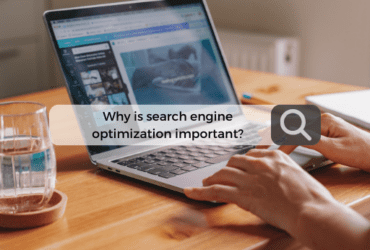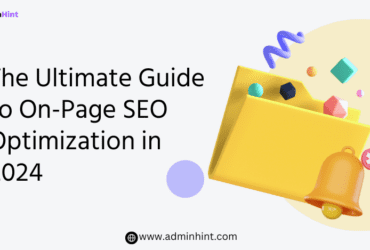On-page SEO: A solid web presence is essential for companies of all sizes in the modern digital environment. And achieving that presence often hinges on ranking well in search engine results pages (SERPs). This is where search engine optimization (SEO) comes in, and specifically, on-page SEO.
On-page SEO refers to the optimization techniques applied directly to your website to improve its ranking for relevant search terms. By implementing these strategies, you can signal to search engines that your website is valuable, informative, and user-friendly, ultimately increasing your website’s visibility and organic traffic.
Here are 10 proven on-page SEO strategies to help you climb the SERP ladder:
1. Keyword Research and Optimization: On-Page SEO

- Uncover the gold: Conduct thorough keyword research to identify relevant keywords with high search volume and low competition. Tools like Google Keyword Planner and SEMrush can be helpful in this process.
- Strategic placement: Integrate your target keywords naturally throughout your content, including titles, meta descriptions, headings, and the body text itself. Avoid keyword stuffing, as it can negatively impact user experience and search engine rankings.
2. Compelling title tags and meta descriptions:

- First impressions matter: Craft concise and captivating title tags that accurately reflect your page content and include your target keyword. Aim for around 50-60 characters.
- Meta magic: Write compelling meta descriptions that entice users to click on your webpage in search results. Keep them around 155-160 characters and include a call to action.
3. Clear Structure with H1 & H2 Tags:

- Organize for understanding: Structure your content using clear and concise H1 tags (one per page) and H2 subheadings. These signal the main topic and subtopics of your content, making it easier for search engines and users to understand.
4. Optimize Images and Alt Text:

- Visual storytelling: Use high-quality images relevant to your content and optimize their file size for faster loading times.
- Descriptive alt text: Include descriptive alt text for each image, not only improving accessibility but also providing an opportunity to incorporate relevant keywords.
5. Internal and external linking:

- Connect the dots: Strategically use internal links to connect relevant pages within your website, improving user navigation and website hierarchy for search engines.
- Credibility boost: Link to high-quality external sources that add value to your content and establish your website’s credibility. Make use of informative anchor text that appropriately conveys the content of the linked page.
6. Mobile responsiveness and page speed:

- Mobile-first mindset: Ensure your website is mobile-friendly, as Google prioritizes mobile-responsive websites in search rankings.
- Speed is key: Optimize your website for fast loading times by compressing images, minifying code, and leveraging browser caching. Users and search engines alike appreciate speedy websites.
7. User Experience (UX) Optimization:

- Prioritize user experience: Design your website with a user-friendly interface, clear navigation, and high-quality content. A positive user experience can indirectly improve your SEO by encouraging longer dwell times and lower bounce rates.
8. Fresh and engaging content:

- Content is king. Produce excellent, educational, and captivating content that meets the needs and search intent of your target audience. Regularly update your website with fresh content to keep users and search engines coming back for more.
9. Technical SEO:

- The foundation: While on-page SEO focuses on content and user experience, don’t neglect technical SEO aspects like website structure, robots.txt file, and sitemap optimization. These factors contribute to a website’s crawlability and indexability by search engines.
10. Track and analyze:

- Measure and adapt: Regularly monitor your website’s SEO performance using analytics tools like Google Search Console. Analyze the the data to identify areas for improvement and adapt your on-page SEO strategies accordingly.
Remember, SEO is an ongoing process, not a one-time fix. By consistently implementing these on-page SEO strategies and adapting them based on data and analysis, you can gradually improve your website’s ranking and visibility in search results, driving organic traffic and achieving your online goals.






Leave a Reply